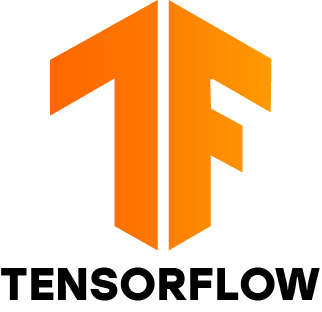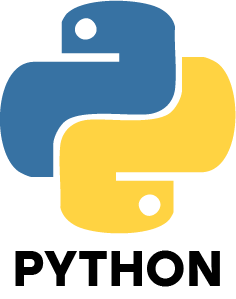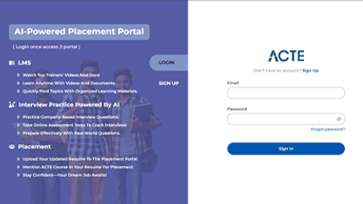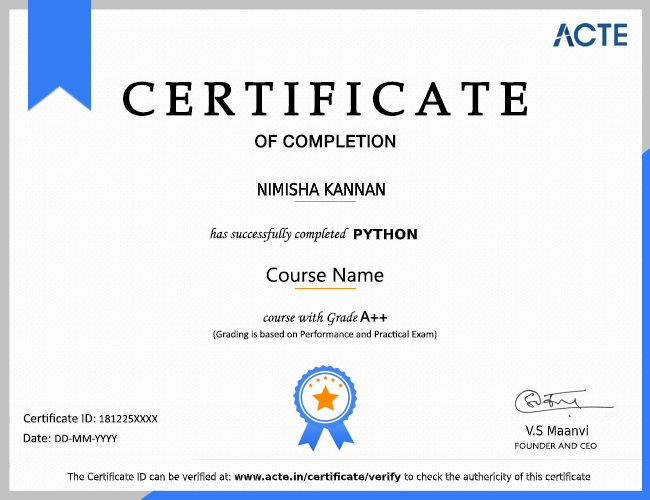This course makes R programming understandable and the daily problem of data science usage of R programming. We begin our trip with a grasp of the R programming paradigm, and then go to solve the data science challenge. This course focuses on theory and laboratory equally. In the conclusion, you will, of course, get a good comprehension of these issues and have a good working experience. Get the R skills you need as a data scientist to succeed. No previous experience in coding is needed. This path teaches you how this adaptable language can import, clean, and alter data all integrated capabilities for any professional or researcher aspiring to the data. You get a hands-on some of the most popular R packages, including ggplot2 and tidy verse packs such as dplyr and readr, via interactive tasks. You will next engage with real-world data sets to understand the statistical and machine-learning approaches that you have to develop and analyze your functions. Start this path, develop your R abilities and start your journey into a trustworthy data scientist.You can obtain a career or move forward on your present one by knowing Data Science With R Training in Bangalore.
Additional Info
Why We Choose R for Data Science?
Once you have a position as an embedded system engineer, you can work completely till you retire like a CPA, a doctor, or a lawyer. The essential is that the latest technology remains up to date and knowledgeable. However, it is also true that many transitions to management or marketing jobs inside firms are intended for bigger financial gains. Here is a review of some of the job routes that an embedded system engineer can access:
- Data science has been established in the most popular field. This is because the analysis and building of insights from the data is a matter of urgency. Industries turn raw data into data products supplied.
- To achieve this, several critical technologies are needed to churn the raw data. R is one of the computer languages that allow you to analyze, analyze, manipulate and visualize information in an intense environment.
- For many statisticians who desire to contribute to developing statistical models to resolve difficult issues, this is the main choice.
- R includes a wide range of products appealing to various fields, including astronomy, biology, etc. R is currently utilized in industry, while it was first employed for academic reasons.
- R is a state-of-the-art language used for complicated statistical modeling.
- In addition, R also supports array, matrix, and vector operations. R is known for its visual libraries which enable users to define and interact with aesthetic graphs for users.
- In addition, R enables its useful users to construct R Shiny web apps, which are used to insert visualizations into web pages and give users a high degree of engagement.
- Data extraction is also an essential component of data science. R offers the possibility to interface the R code with database management systems for this purpose.
- R also offers you various alternatives for sophisticated data analysis, such as prediction models, machine learning techniques, and so on. R also has many image processing packages
Why is Data Science Important?
- R offers a variety of significant data packets such as dplyr, purr, readxl, google sheets, datapasta, jsonlite, tidyquant, tidyr, etc. R provides several key features in data science applications.
- For statistical modeling, R provides considerable assistance. Because data science is heavy with statistics, R is the best tool to carry out numerous statistical procedures.
- R is an interesting tool for several applications in data science since it offers esthetical display tools, like ggplot2, scatterplot3D, grid, high charter, etc.
- R is used extensively in ETL data science applications (Extract, Transform, Load). It offers an interface for several databases, including SQL and even tablets.
- Another essential feature of R is to connect and analyze unstructured data with NoSQL databases. In data science applications where a data pool has to be evaluated, that is quite helpful.
- Data scientists may use algorithms to learn about future occurrences with R. Various programs such as rpart, CARET, RandomForest, and nnet are available.
The features suitable to data science with R:
Powerful data display:- For any data research project the data dispute is most significant when it is cleaned, restructured and enriched by turning the rough data into a more useful format. R has various common functions for handling data values. For example, when the value missing is represented by NA in R, R gives the cleanup functionality for anyNA(), na.fail(), na.pass() is.na(), na.exclude(), na.exclude(), complete.cases() and is.finite().
Extensive support for statistical modeling:- Statistical modeling is important in determining the relationship between one variable and another. R has strong statistical modeling capabilities. It offers great functionality for central tendency, variability measurement, probability testing, ANOVA testing, and regression analysis.
Great ETL facilities:- R provides high-performance functionality for ETL for data science applications (extract, transform and load). It has great interfaces for various databases, including Excel-type ETL table tools.
NoSQL database connection:- In most data science initiatives, unstructured data is handled. R can supply NoSQL database interfaces and efficiently analyze unstructured data.
Machine learning algorithms support:- support The four primary categories of machine learner algorithms are supervised education, unsupervised learning, semi-supervised education, and strengthened education. R deals in engaging ways with every form of machine learning. Classification and regression both supervised learning techniques are handled efficiently with R. The standard functions are used to address linear regression, logistic regression, linear discrimination analysis, neighborly areas, decision-making areas, neural networks, and the supportive vector machines. R also handles successfully unattended difficulties of learning linked to grouping and association. The computer has the difficulties of an agent in reinforced learning, which can then learn the best behavior in live environments through trial and error. R provides a package for addressing these issues also.
Use of R for data science benefits:
Data science is an interdisciplinary subject in which crucial choices are taken in all fields to obtain meaningful insights from organized and unstructured data. R is a sophisticated program with a great ability to statistically and visualize data scientists. Data science is the process of data comprehension, derived from a wealth of organized and unstructured data, with relevant and critical knowledge. In present circumstances, this topic is particularly significant since each organization has numerous data of all kinds yet often strives to obtain valuable insights. What data science procedures need is a correct algorithm for processing the information and for easy execution of the method.
R is the most efficient tool to do data science algorithms and the capacity to work with large amounts of information. It offers several linear and non-linear models, conventional statistics testing, time series analysis, and machine learning capabilities, and good visualization techniques (e.g. classification, clustering, regression, and strengthening learning). It is an integrated collection of data science software applications.
R's major features are:
- Efficient data management and storage.
- Many data analyzer operators for each item.
- Many tools and packages for structured and unstructured data analysis were incorporated.
- Excellent visualization capability to picture the data.
- A simple and efficient programming interface for data manipulation and self-learning algorithms.
- The best statistical calculation environment.
- Excellent documentation to explain each method and package in depth.
Important R package for the science of data:
R packages play a major role, let us look out some popular and valuable packages:
1. ggplot2:- R is best known because of its Ggplot2 visual library. It offers an attractive collection of interactive visuals, too. Ggplot2 has various add-ons to enhance usability and experiences.
2. Tidyr:- Tidyr is an R packet for cleaning and organizing your information. Tidyr processes the data via two attributes.Each column must be handled as a variable. Each line is a remark. You may use Tidyr to arrange data into rows and columns using three principal functions: gather(), spread(), separate().
3. Dplyr:- Maybe you can organize, manage and wrangle data with dplyr, the most relevant R package. A key element of dplyr is that it employs a simple to remember declarative syntax. Dplyr makes it easier to choose, alter, filter, mutate, and so on for different processes.
Learn key reasons for data science with R:
An ambition for many data aficionados is to become a data scientist. There are few fundamental reasons:
1. Field of high demand:- The Data Science job is one of the most sought-after careers and is forecast to produce over 11.5 million employment. It is estimated. The demand for data science skills is growing while the supply is too low. This lack of skilled data scientists has increased their market demand. A Sloan Management Review poll shows that 43% of organizations feel that a lack of data analysis abilities is a critical impediment to their success
2. Highly Pay & Various Roles:- Because data analytics are the key component of decision-making, firms are ready to recruit more data scientists who can support them in making the appropriate judgments to promote corporate success. Given that this is a less saturated location with an intermediate talent base, there have been many occasions that necessitate a variety of knowledge. Data science was the top paid field in all sectors in the year, according to Glassdoor.
3. Environmental development in the workplace:- The emergence of technologies such as artificial intelligence and robotics that lie under the framework of data science has replaced the great majority of manual activities with automation. To free people to focus on the key problems they need attention too, Machine Learning allowed computers to carry out repetitive activities. There have been many new and intriguing technologies such as Blockchain, Edge Computing, Serverless Computing, and others in this industry.
4. Product Standards Enhancement:- Customers have the experience that organizations want with the rigorous use of regression Machine Learning techniques, classification recommendations issues like decision trees, landscape forestry, neural networks, naive bays, etc. One of the greatest examples is the eCommerce sites that employ intelligent Recommendation Systems to recommend items and offer customer-centered insights according to their previous purchases. In determining the intended target population and managing marketing initiatives, data scientists function as trusted consultants for such organizations.
5. The world's help:- Almost all revolve around data in the world nowadays. Data scientists collect hidden knowledge from enormous volumes of facts that assist to make decisions across industries such as finance, healthcare, manufacturing, pharmaceutical, and technology. Companies have data-driven insights to increase production and growth while optimizing resources and mitigating any hazards. Data science catalyzes research and innovation, bringing good change to our lives all across the world.
The different types of Job Positions:
The issue arises which are the different fields used in R and which make it the trendy theme. The occupations that can lead to your 'R' illumination in R programming are as follows:
- R programmer
- Data Scientist
- Data Analyst
- Data Architect
- Data Visualization Analyst
- Geo Statisticians
- Database Administrator
- Quantitative Analysis with R
R Programmer:- The R programmers are responsible for using their programming talents, knocking the data down, and developing tools for facilitating data analysis. They employ vectors, matrices, and data frames to support speedy and efficient development. Data structures are available.
Data Scientist:- This is one of the routes that R programmers require. A data scientist is responsible for the design and implementation of layouts for massive data collections, data modeling, data mining, investigation, and prediction.
Data Analyst:– balance of technical and analytical expertise should be a data analyst. An analyst of the data should search, collect, struggle and provide insights from the information well versed. A DA should also have an in-depth understanding of a database and machine learning system.
Data Architect:- Many areas require data architects nowadays. Data architects combine their data sources and maintain them. You must remain relevant by the current technology such as Spark. The architect should also be knowledgeable of the warehousing of data, architecture of the database, ETL and BI tools, models of data, and development systems.
Data Visualization Analyst:- An analysis analyst for data visualization should be able to design and distribute interactive dashboards to provide information for making important business choices. They produce a detailed visual report that aids the company in forecasts and judgments that assist the company to expand.
Geo Statisticians:- These specialists take over the examination of geographical and time-set data.
Database Administrator:– A database manager guarantees that any user requiring a certain set of data has a database. They guarantee that all information has a method for backup and recovery. They must also take care of the modeling of data, design, and data security and be knowledgeable about their businesses.
QA using R:- Quantitative Quantitative analysis guarantees that all the portfolios are risks-balanced and help us uncover new chances and assess any asset price using mathematical models in any different field like finance, telecommunications, hospitality, etc.
What's the salary of the Data science with R?
Young IT workers find a job in the field of data science particularly attractive. Starting wages are extremely profitable and the wage with experience increases. A data scientist's salaries and years of experience rely on the expertise:-
Data scientist salaries at the entry-level:- A data scientist's typical entrance pay is about INR 69,57,087 annually, a quite high level.
Data scientists' mid-level wages:- The average compensation for a mid-level data scientist with about 1 - 4 years of experience is INR 94,28,684 annually. The typical wage is up to INR 35,48,012 a year if the data scientist is managed.
Data scientist's pay with experience:– An expertise data scientist's typical pay of around 5 to 9 years is INR 94,28,684 per year, but an experienced manager's median income is significantly higher; around INR 83,08,125 per year.







































